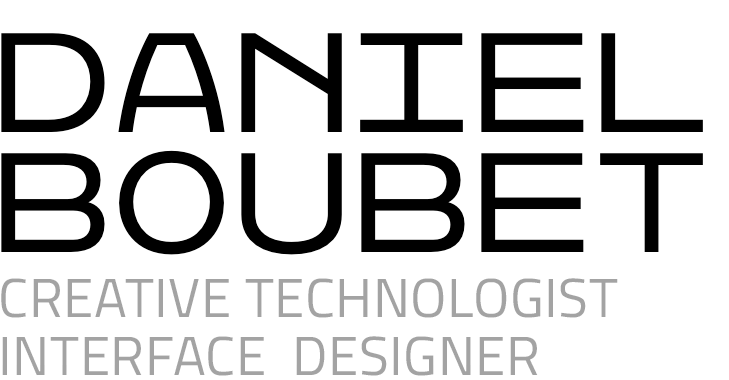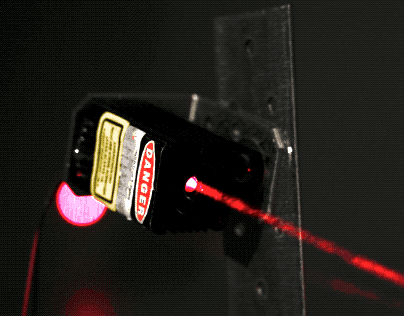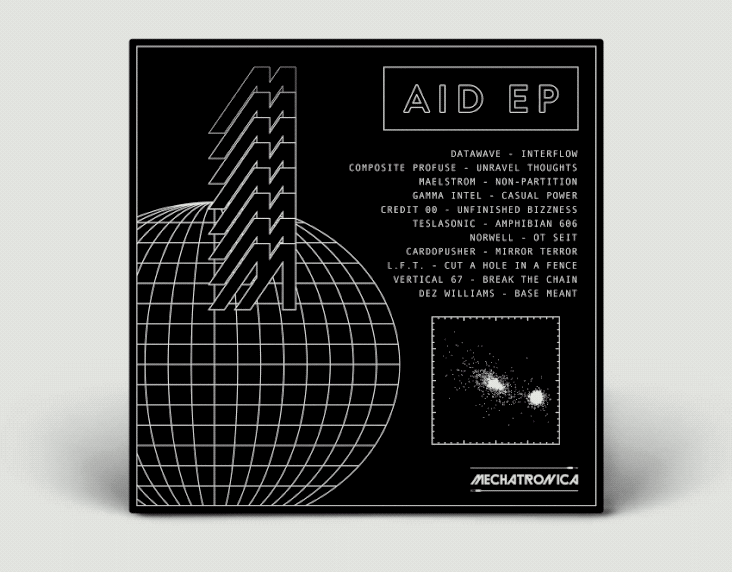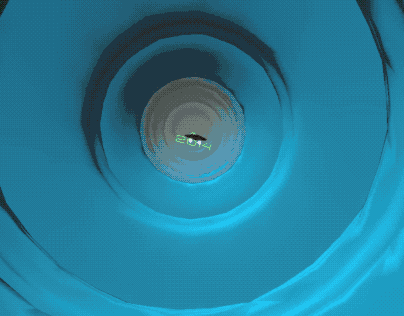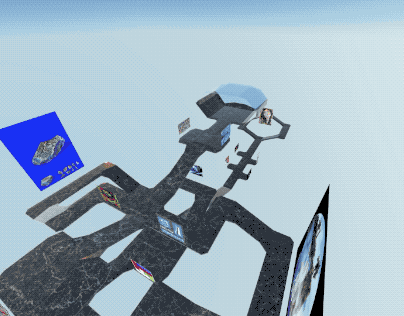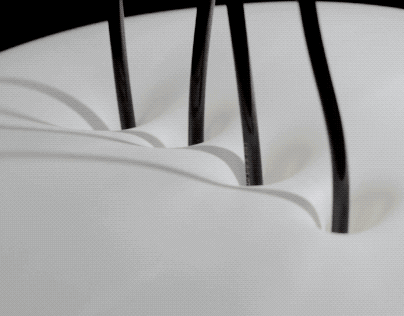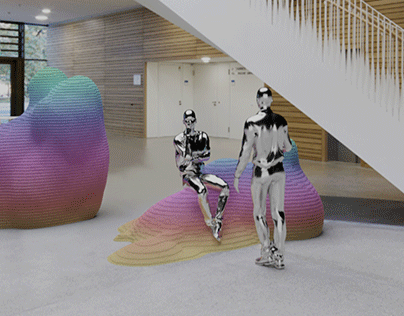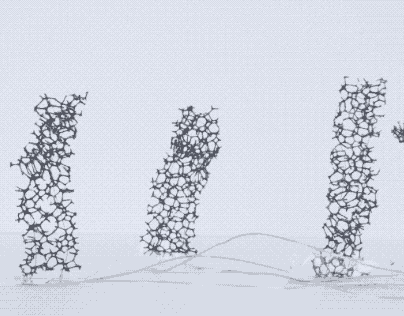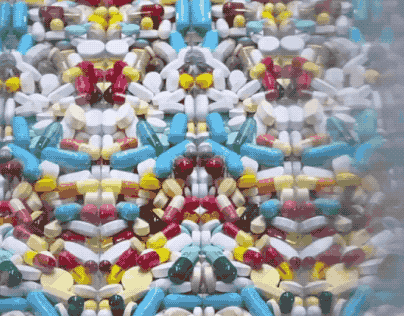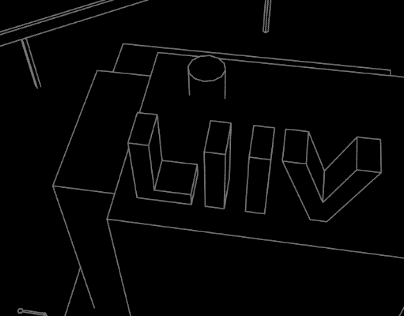RE–DESIGN
INCLUSIVITY
Regarding inclusivity in museums, the goal of this project was to redesign objects exhibited in the "Museum für Naturkunde" in Berlin.
We picked the "Tree of Life" visualization between the objects to choose from, which needed to reduce the data displayed. To include a wider audience, we decided to simplify the interaction and information.
We picked the "Tree of Life" visualization between the objects to choose from, which needed to reduce the data displayed. To include a wider audience, we decided to simplify the interaction and information.
LEAP MOTION AND UNITY
New technologies are increasingly being used in exhibitions to enrich the experience of the visitor. Because of this, we decided to use the gesture sensor "Leap Motion" to try out its capabilities regarding inclusivity.
Since "Leap Motion" is not fundamentally an inclusive device regarding physical disabilities, it is supposed to be challenging to adapt its functionality to make it work for different personas.
Since "Leap Motion" is not fundamentally an inclusive device regarding physical disabilities, it is supposed to be challenging to adapt its functionality to make it work for different personas.
METHODS
To simplify the actual visualization from the "Tree of Life," we picked five representative lifeforms.
Frog, Human, M.Jannaschii, Potato, and E.Coli.
Frog, Human, M.Jannaschii, Potato, and E.Coli.
The visualization turns into a game where the user can genetically compare two different types of life forms.
After picking up two life forms with a grab gesture, additional information and a percental comparison graphic are shown.
Cause of the nature of the interaction, besides a physical disability, we focused on inclusivity in conveying information clearly and showing complex information with simple examples. Together with playful interactions, we expected to reach a wide range of museum visitors.
After picking up two life forms with a grab gesture, additional information and a percental comparison graphic are shown.
Cause of the nature of the interaction, besides a physical disability, we focused on inclusivity in conveying information clearly and showing complex information with simple examples. Together with playful interactions, we expected to reach a wide range of museum visitors.
PROTOTYPE 1
Since this was our first project with "Leap Motion," it was necessary to test its capabilities with the software Unity. Thus, for the prototype, we focused on the interaction of grasping objects in virtual space.
PROTOTYPE 2
We had the chance to test the prototype with real users at the"Museum für Naturkunde" in Berlin.
We created 3D models of the life forms inside glass-looking spheres. Then, the user collided the two objects in the virtual space and observed the similarities of the lifeforms in a percental graphic.
We created 3D models of the life forms inside glass-looking spheres. Then, the user collided the two objects in the virtual space and observed the similarities of the lifeforms in a percental graphic.


PROTOTYPE 3
For our third prototype, we implemented the outcomes gained in the last workshop. We tested our prototype at "TUECHTIG" in this opportunity, a Co-Working space for persons with disabilities. The experimentation with visual and mobility impairments users took us to implement the interface in readability and object placement.
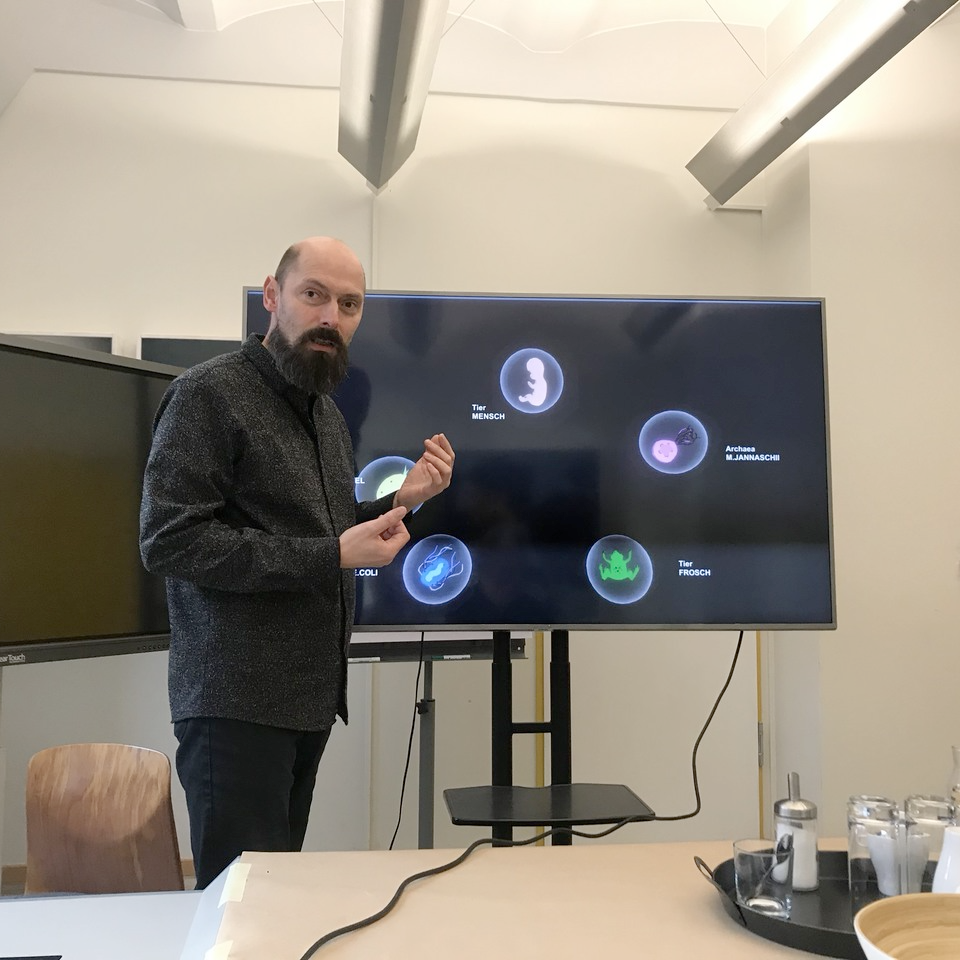

PROTOTYPE 3
In the fourth iteration, we improved the UI-Elements, typography, and post-processing graphics.
A pop-up action was integrated with the selected life forms, showing the related information. We added a go-back to the main screen to enrich the game environment, allowing a complete game experience.
A pop-up action was integrated with the selected life forms, showing the related information. We added a go-back to the main screen to enrich the game environment, allowing a complete game experience.
OUTLOOK
There is a lot of work to do to make our prototype a final product. One of our goals is to have better game guidance to interact naturally with the gesture sensor. Generally speaking, we would like to enhance our prototype esthetically, upgrading 3D forms and getting smoother transitions.
On the information level, we evaluate adding more complexity to the game, integrating different life forms to enrich the experience.
On the information level, we evaluate adding more complexity to the game, integrating different life forms to enrich the experience.
Project made together with Max Tamm.
